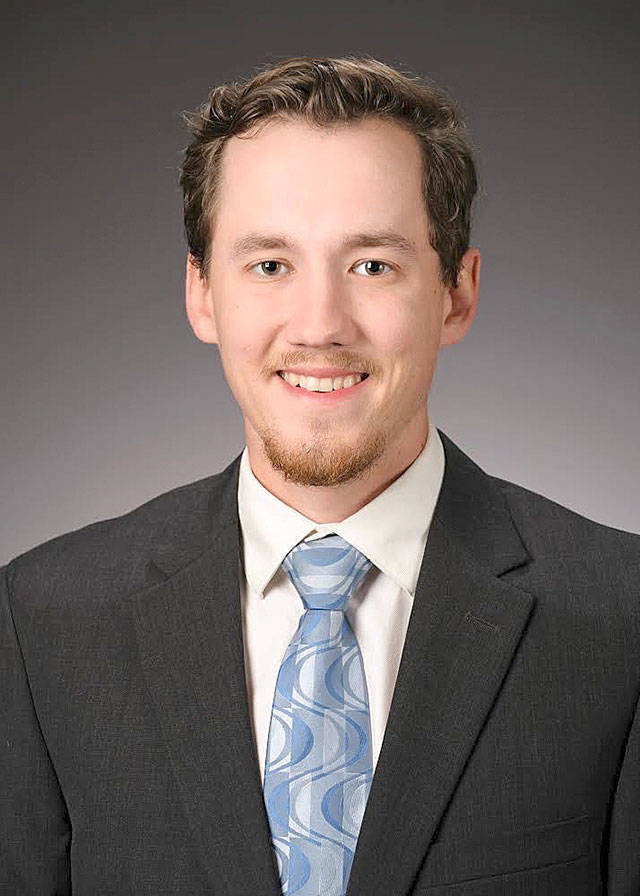Over the past 30 years or so, the world of baseball has slowly and begrudgingly accepted analytics as a way to measure players’ performances.
And David Tillotson, a 2011 graduate of Oak Harbor High School, has used that path to stay involved in the game now that his playing days were over. He is the director of analytics for the University of California, Santa Barbara baseball team.
Bill James coined the phrase sabermetrics (in reference to the Society of American Baseball Research) in 1977 as a label for the idea of using statistical data to determine why teams win and lose.
Michael Lewis pushed sabermetrics to the forefront of baseball and further into the public eye with his best-selling book Money Ball, which was later made into a hit movie.
From there, the use of metrics in sports grew to include analyzing and maximizing the way a player moves and how he uses his body.
Tillotson, armed with sabermetrics and a mountain of other data, is responsible for player development and opponent scouting at UCSB.
“I think the position really meshes my background of science and math with my passion for baseball,” he said. Tillotson enjoys how analytics gives “a more concrete explanation” for what caused a result.
Competes for ’Cats
Tillotson played baseball and basketball for four years at Oak Harbor High School. He also played football for two years before choosing to play fall baseball in Bellingham as a junior and senior.
He planned to attend the University of Washington after graduating from high school, but playing summer baseball for the Skagit Sox led to an opportunity to play for Centralia College.
An ACL injury forced him to sit out his first year at CC, then he played ball for the Trailblazers the next two years while earning his associates in science degree.
He transferred to the University of Washington and eventually became student manager for the Husky baseball team and picked up his bachelor of science in biology.
Tillotson then signed up for the Teach for America program in 2016 and went through summer training in Cleveland, Miss. That resulted in a job teaching at Cleveland High School and serving as the assistant baseball coach.
Before his second year at Cleveland, the community’s two high schools consolidated after a nearly five-decade fight to eliminate segregation.
“Initially, when I got into coaching, it was probably more for selfish reasons,” Tillotson said. “I missed the game, missed the pursuit of wins and championships, missed the camaraderie of a team and, probably most importantly, I needed an escape from the daily grind of teaching.”
As he spent more time with his student athletes, he realized he had an increasing urge “to share lessons and help them grow, not only as baseball players but also as young men.”
“I’m not sure I can place my finger on one lesson I hoped that student athletes would take from my coaching, but I think that as a whole I just wanted them to understand that you get out what you put in,” he added.
Enters college ranks
In 2019, Tillotson elected to return to college to earn his masters and pursue a job working in baseball at a higher level.
Donegal Fergus, whom he met at the University of Washington and had moved on to UCSB, helped Tillotson land a spot with the Gaucho baseball coaching staff.
As the director of analytics, Tillotson uses a number of instruments.
“The main tool we use for game and scrimmage research is TrackMan, which captures different data points that you might see in a Major League Baseball game, like a pitch’s spin rate or a batted ball’s launch angle and exit velocity.”
He also uses Rapsodo, Pitch Logic, Motus, K-Vest and Blast Motion.
These tools track and assign numbers to other aspects of the game, such as an athlete’s body angles when he hits and throws or the bat speed and rotational power when he swings.
Leads team
Tillotson also guides a group of eight interns, who are majoring in areas such as data science, statistics and economics, through research projects regarding pitching, hitting and defense “to give our players here every competitive edge possible,” he said.
“Some of the coolest projects we’ve developed have been heat maps that help hitters and pitchers know their hot and cold zones (areas of success in the strike zone) based on previous results,” Tillotson said.
“We’ve also have been able to help players develop more efficient movement patterns to be able to hit balls harder and farther and to throw pitches that are faster and move more than they did previously.”
Looks to the future
While Major League Baseball has finally accepted the use of analytics, there still remains some resistance from baseball lifers who claim statistics can’t replace the eye test and gut feelings. Tillotson said he has not encountered any pushback.
“I actually feel like I’m an old timer at just 28 because I didn’t have anything resembling this stuff at my disposal when I was playing,” he said. “Now things like Pitch Logic and Blast Sensors — and even Rapsodo — are financially feasible for high schools and (individual) players to acquire.”
Analytics are here to stay, and since all 30 Major League teams embrace the technology, college players help their draft stock by becoming familiar with the concepts, Tillotson said.
He sees analytics and the experience gained working in the field as a way to open doors as he moves forward in his career.
“My future plans are to step from my analytics role into more of an on-field coaching position,” Tillotson said. “I’m not necessarily set on a location in the U.S., but I do think that I want to stay in the college game. Something about the allure of Omaha (home of the College World Series) has always been something I wanted to experience.”



